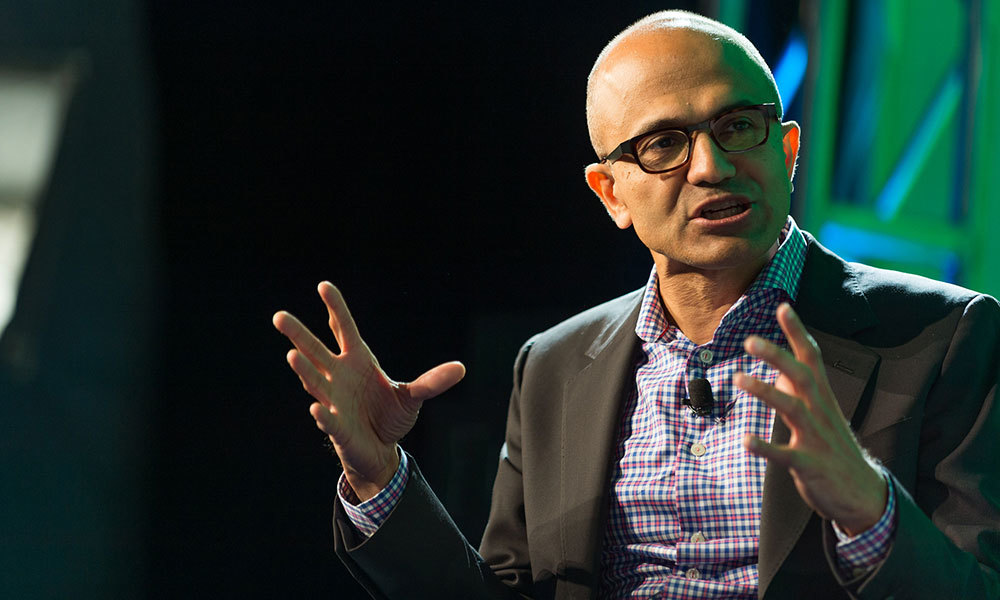
Recalibrate Your Organization Around Innovation. Slowly.
Microsoft’s dramatic decision to get rid of its Windows team offers an amazing example of how an older organization can restructure itself away from past success into a more innovative future. It’s a business case that’s very much worth studying.
Late last month, Microsoft blew up the structure that once defined the entire company.
They turned Windows, the longtime star of the show in Redmond, into a somewhat minor player that no longer even has its own dedicated team. (You’ll see new versions of Windows, they just won’t be made by a team that’s centered around the operating system.)
If you’ve been following Microsoft, you know that this move is a major sea change for the company, which organized itself completely around Windows for more than two decades. In a letter sent to Microsoft employees at the end of last month, CEO Satya Nadella emphasized that while Windows was an important part of its future, it would ultimately not be the only way that people used its services.
“Computing experiences are evolving to include multiple senses and are no longer bound to one device at a time but increasingly spanning many as we move from home to work and on the go,” he explained. “These modern needs, habits and expectations of our customers are motivating us to bring Windows, Office, and third-party applications and devices into a more cohesive Microsoft 365 experience.”
This is a significant move, one that might make Microsoft a better company in the long run, as it encourages the organization to focus on its future endeavors, rather than holding one foot in the past. It’s the biggest step forward in a multiyear process in which Nadella has changed expectations about a company that at one point seemed hopelessly obsessed about creating a single experience around Windows at the cost of everything else, a process that at times struggled to take off as the company expanded its palette to touch computing and mobile.
Microsoft’s decision-making process as it’s moved much of its business into cloud computing and endeavors like artificial intelligence has put the company into some unlikely places, such as in a prominent spot with the Linux Foundation. But to downplay Windows as a whole within the organization? That’s, like, crazy talk.
No, Microsoft isn’t killing Windows, Surface, or the Start Menu, but it is right-sizing its importance within the company as a whole.
The move, beyond being a harbinger about just how much the world of computing has changed, represents something else for associations: Microsoft may just be an inspiration.
Recentering the Business
Last week, Ben Thompson of Stratechery highlighted how far Microsoft has come in recent years, shifting from a Windows-centric mission to one built around cloud computing and services like Office 365. Microsoft, Thompson wrote, suffered from a “classic case of disruption” with its Windows product, which suffered from the growth of web-based applications and the rise of mobile.
Thompson goes on to explain that “the story of how Microsoft came to accept the reality of Windows’ decline is more interesting than the fact of Windows’ decline; this is how CEO Satya Nadella convinced the company to accept the obvious.”
Admittedly, a leadership change helped—Steve Ballmer, the guy Nadella replaced, built his entire career at Microsoft around the Windows-first model (and developers), to the point where some of the company’s bad business moves, like buying Nokia, were colored by attempts to build up the Windows business at the cost of everything else. The model, over time, showed weakness.
Microsoft’s moves here offer one way out: Build new strategies, isolate the old ones, and gradually shift everything over to the new direction.
Nadella took the opposite approach—after getting Windows back on track with Windows 10, the company then isolated its impact from the rest of the company. This allowed other parts of the firm, including its cloud and services businesses, to grow, while moving away from a corporate structure that had become unhealthy.
The Windows team made decisions on its own to ramp down unsuccessful product lines, specifically Windows Mobile, and when the opportunity showed itself, Nadella moved to downplay Windows entirely, putting the goals of the company first—offering computing solutions to the public—over one single operating system. Investors have shown support for Nadella’s strategy in the form of an increased stock price.
“To put it another way, Nadella’s shift to a post-Windows Microsoft is the right one; to have done the same a decade sooner would have been better,” Thompson added, though he added that the stock market may have prevented such a decision at that time.
A Gradual Exit Strategy
Associations, for one reason or another, might find themselves similarly dedicated to a business model or technology that’s quickly growing out of date, with no exit strategy.
Microsoft’s moves here offer one way out: Build new strategies, isolate the old ones, and gradually shift everything over to the new direction.
That strategy may or may not be the right one for your organization, but considering how hard it can be to digest innovation even in small chunks, it’s worth considering how to take on a bigger bite, especially since not every change can be winnowed down. Some might advise a more dramatic change if your organization is struggling, but what if your organization is seeing success now but faces an uncertain future?
If you want to borrow a cue from Microsoft, a technology company that has more cruft than most, it means careful evolution—not too fast, but not too slow.
You can’t look at everything through the windows of your past glories.
Microsoft CEO Satya Nadella. (Fortune Brainstorm TECH/Flickr)






Comments